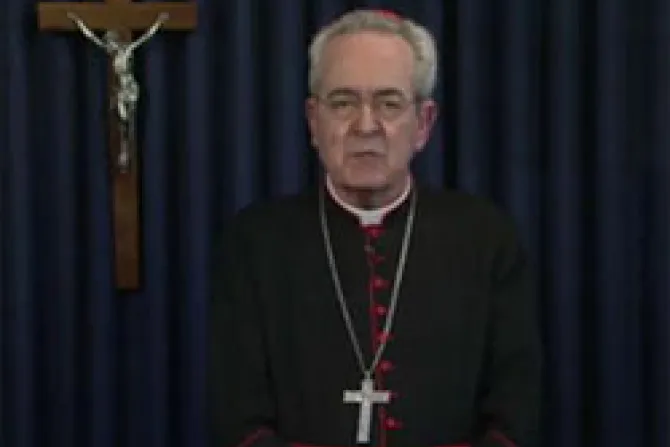Washington D.C., May 14, 2013 / 23:11 pm
Cardinal Justin F. Rigali, archbishop emeritus of Philadelphia, said that the five Popes involved in the Second Vatican Council shared a common vision of protecting and spreading the Catholic faith.
Popes John XXIII and Paul VI "emphasized the need for prayer, need for understanding" as they oversaw the council, Cardinal Rigali said, explaining that this mindset became the "ethos" of Vatican II following the gathering.
The goal of the Second Vatican Council was "to help the world see Jesus," he stressed, "so that everything about us would be more in conformity with Jesus Christ."
The cardinal's May 9 remarks were delivered at the Basilica of the National Shrine of the Immaculate Conception in Washington, D.C., as part of a Year of Faith lecture series.
The Second Vatican Council, also known as Vatican II, opened in 1962 under Pope John XXIII and closed in 1965 under Pope Paul VI. Future Popes John Paul I, John Paul II and Benedict XVI were also present throughout the council and participated in its discussions.
Vatican II focused upon the Church's relation to the modern world and implemented a number of reforms designed to make the teachings of the Church more understandable without compromising their content.
Cardinal Rigali, who was present at the council as an assistant and translator, recalled his experiences as a young priest at the gathering, which saw a significantly greater number of bishops – particularly Eastern Rite Catholics, and bishops from missionary areas, Africa and Latin America – than its predecessor, the First Vatican Council.
The number and diversity of bishops present at the meeting "showed how universal, how catholic, the Catholic Church is, made up of people from every nation, from every rite," he reflected.
This display of the Church's diversity demonstrated that "here are so many people...that want to see Jesus" and who want to "encounter him in the Church and in others," he said, explaining that this is the reason that Pope John XXIII called the council.
With this in mind, the cardinal clarified, Vatican II aimed to help "all the people become one," not by giving up the faith, "but principally in prayer and vocation in the Holy Spirit," coming together as the Body of Christ.
Throughout the council, Cardinal Rigali noted, it "was so important that everything be about Jesus," and that the "sacred deposit of Christian doctrine" be protected and passed on.
Through the council, "many graces" were given to the Church, he said, but following Vatican II, the Church also faced many challenges, and "not all of them have been met."
Among these challenges has been the question of what constitutes "the Spirit of Vatican II," Cardinal Rigali said, citing Pope Benedict XVI, who said "there is no spirit of Vatican II independent of what Vatican II says."
He also recalled the former Pontiff's quote, "Not everything that happened in the name of Vatican II belonged to Vatican II."
A proper reading of Vatican II sheds light on our efforts to faithfully understand the intersection of the Church and the modern world, the cardinal explained.
"As we read the documents 50 years later, it's amazing to see how relevant they are, how much they apply to the Church," he remarked.
(Story continues below)
Primarily, he explained, the Second Vatican Council was "supposed to be about clarity of teaching" and charity.
The work of teaching and clarifying the council has been furthered through the papacies of the Popes following Vatican II, especially Pope John Paul II and Benedict XVI, he said.
Cardinal Rigali emphasized that the five popes involved with the council represent the true nature of Vatican II.
"They all have the same spirit of the council, they all have the exact same idea of what it was supposed to be," he said.



